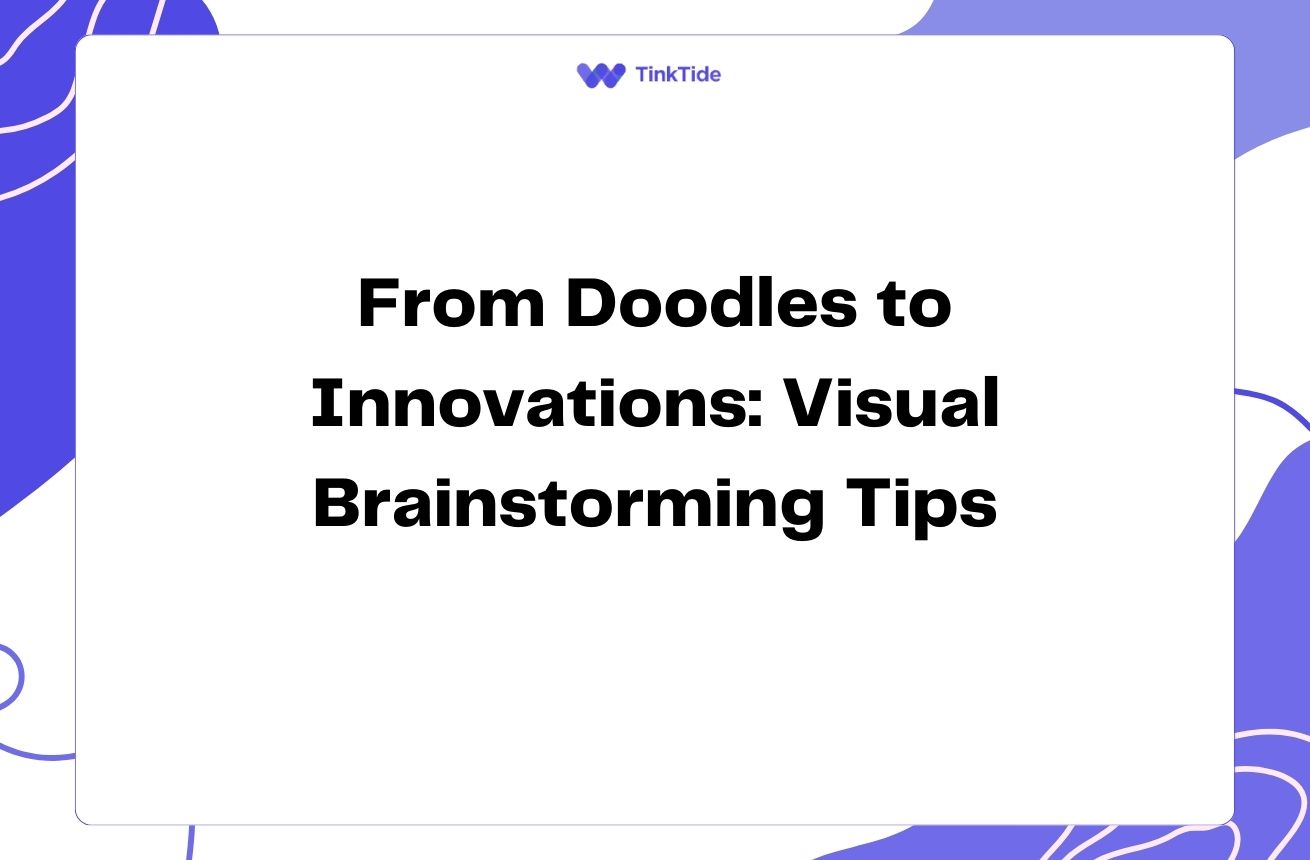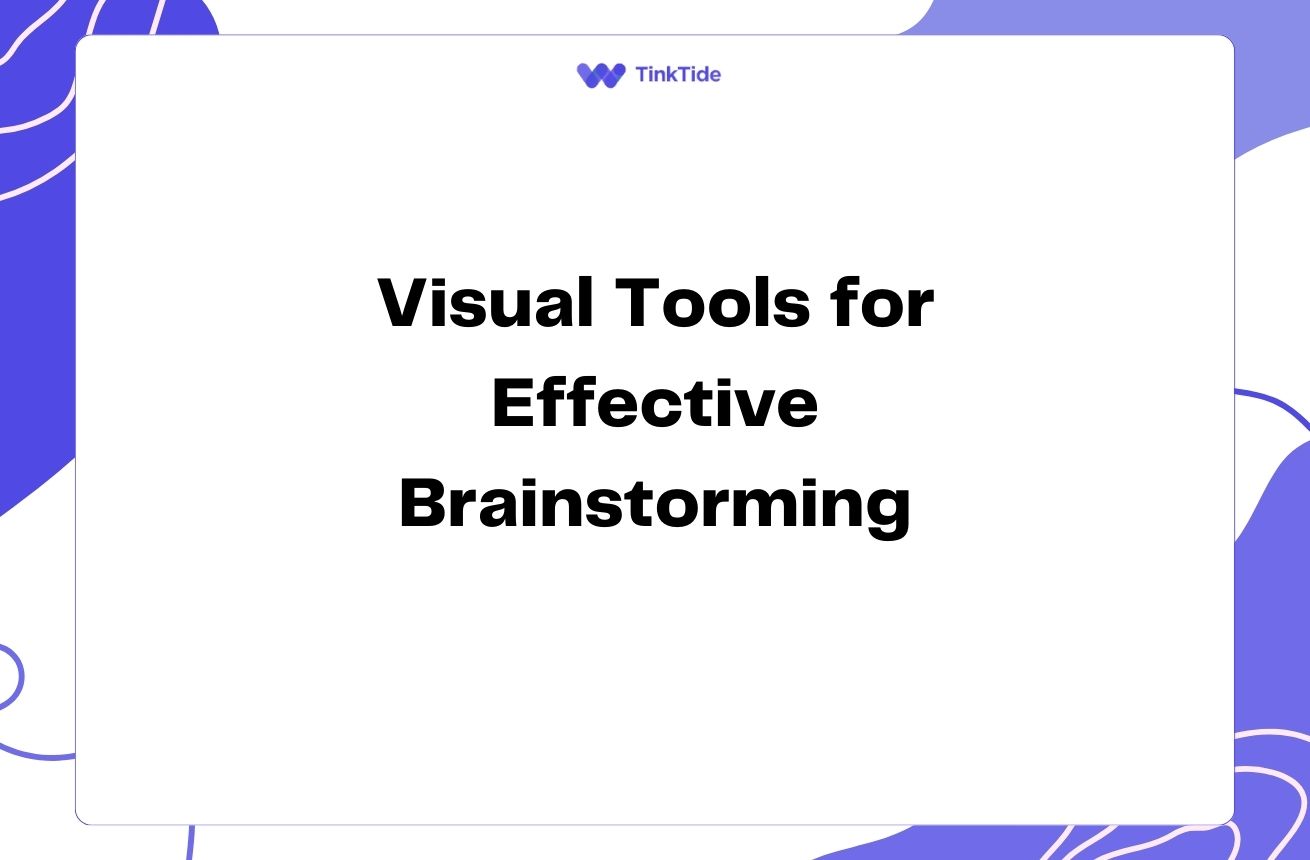Boost Marketing Communication with Visual Thinking
The Power of Visual Thinking in Marketing
In the fast-paced world of marketing, clear communication is crucial. Visual thinking offers a powerful tool to enhance understanding and collaboration within marketing teams and with clients. By leveraging visual elements, marketers can convey complex ideas more effectively, leading to improved campaign outcomes and stronger client relationships.
Visual thinking involves using images, diagrams, and other visual representations to process and communicate information. This approach taps into the brain's natural ability to process visual information quickly, making it an ideal method for marketing professionals who often deal with abstract concepts and data-heavy strategies.
According to a study by MIT researchers, the human brain can process images in as little as 13 milliseconds. This rapid processing allows for quicker understanding and retention of information, which is invaluable in the fast-moving marketing landscape.
Benefits of Visual Thinking in Marketing
Incorporating visual thinking into your marketing processes can yield numerous benefits:
- Enhanced clarity in communication
- Improved problem-solving and ideation
- Increased engagement in meetings and presentations
- Better retention of complex information
- Streamlined decision-making processes
Visual Thinking Techniques for Marketing Teams
There are several visual thinking techniques that marketing teams can employ to improve their communication and collaboration:
1. Mind Mapping: This technique involves creating a visual diagram that represents ideas or concepts branching out from a central theme. It's particularly useful for brainstorming sessions and outlining marketing strategies. Tools like MindMeister can help teams create collaborative mind maps.
2. Storyboarding: Borrowed from the film industry, storyboarding helps visualize the flow of a marketing campaign or customer journey. This technique is especially valuable when planning video content or multi-channel campaigns.
3. Infographics: These visual representations of data and information can help simplify complex concepts for both team members and clients. Platforms like Canva offer user-friendly tools for creating professional infographics.
Enhancing Client Communication with Visual Thinking
Visual thinking can significantly improve communication with clients, leading to better understanding and stronger relationships. Here's how:
1. Concept Visualization: Use sketches or digital illustrations to bring abstract marketing concepts to life. This helps clients grasp complex ideas more easily and provides a tangible reference point for discussions.
2. Data Visualization: Transform dry statistics and metrics into engaging visual representations. Tools like Tableau can help create interactive dashboards that make data more accessible and meaningful to clients.
3. Visual Proposals: Incorporate visual elements into your client proposals to make them more engaging and memorable. This could include custom graphics, charts, or even short animations that highlight key points.
Implementing Visual Thinking in Your Marketing Workflow
To successfully integrate visual thinking into your marketing processes, consider the following steps:
- Assess your current communication methods and identify areas for improvement
- Provide training on visual thinking techniques to your team
- Invest in visual collaboration tools and software
- Encourage the use of visual elements in all stages of project planning and execution
- Regularly gather feedback on the effectiveness of visual communication methods
Overcoming Challenges in Visual Thinking Adoption
While visual thinking offers numerous benefits, some challenges may arise during implementation:
1. Resistance to Change: Some team members may be hesitant to adopt new methods. Address this by highlighting the benefits and providing ample support and training.
2. Skill Gaps: Not everyone may feel confident in their visual communication abilities. Offer workshops or online courses to help team members develop these skills.
3. Technology Hurdles: Ensure that all team members have access to and are comfortable using visual thinking tools and software. Consider appointing a 'visual thinking champion' to provide ongoing support.
Measuring the Impact of Visual Thinking
To gauge the effectiveness of visual thinking in your marketing efforts, consider tracking the following metrics:
- Time spent in meetings and decision-making processes
- Client satisfaction and engagement levels
- Project completion rates and efficiency
- Team collaboration and creativity scores
- Marketing campaign performance metrics
Common Questions About Visual Thinking in Marketing
Here are some frequently asked questions about implementing visual thinking in marketing:
How can visual thinking improve our marketing strategy?
Visual thinking can enhance your marketing strategy by facilitating clearer communication, fostering creativity, and enabling quicker decision-making. It helps in breaking down complex ideas, visualizing customer journeys, and identifying new opportunities that might be missed in traditional text-based approaches.
What tools are best for visual thinking in marketing?
There are numerous tools available for visual thinking in marketing. Some popular options include Miro for collaborative whiteboarding, Canva for creating infographics and visual content, MindMeister for mind mapping, and Tableau for data visualization. The best tool depends on your specific needs and the type of visual thinking you're employing.
How can we train our team in visual thinking techniques?
Training your team in visual thinking can involve a combination of workshops, online courses, and practical exercises. Consider bringing in a visual thinking expert for a workshop, encouraging team members to take courses on platforms like LinkedIn Learning or Udemy, and incorporating visual thinking exercises into your regular team meetings.
Can visual thinking help with client presentations?
Absolutely! Visual thinking can significantly enhance client presentations by making complex information more digestible, engaging, and memorable. Using visual aids like infographics, charts, and storyboards can help clients better understand your proposals and strategies, leading to improved client relationships and higher approval rates.
How do we measure the ROI of implementing visual thinking in our marketing processes?
Measuring the ROI of visual thinking can involve both quantitative and qualitative metrics. Quantitatively, you can track improvements in project completion times, campaign performance metrics, and client retention rates. Qualitatively, you can gather feedback from team members and clients on the clarity of communication and overall satisfaction with the new visual approach.
Additional Resources for Visual Thinking in Marketing
The Back of the Napkin by Dan Roam
A comprehensive guide to solving problems and selling ideas with pictures
Visual Thinking for Design by Colin Ware
Explores how design practice can benefit from an understanding of visual perception
Miro's Guide to Visual Collaboration
A practical resource for implementing visual collaboration in teams
IDEO U Course: Storytelling for Influence
Learn how to use storytelling techniques to create compelling visual narratives
Visualizing Marketing Data with Tableau
Tips and examples for creating effective marketing dashboards
Embracing Visual Thinking in Your Marketing Efforts
Visual thinking is a powerful tool that can transform how marketing teams communicate internally and with clients. By incorporating visual elements into your marketing processes, you can enhance clarity, foster creativity, and drive better results.
Remember that implementing visual thinking is a journey. Start small, experiment with different techniques, and gradually integrate visual approaches into your workflow. With time and practice, you'll likely see significant improvements in team collaboration, client satisfaction, and overall marketing effectiveness.
As you embark on this visual thinking journey, keep exploring new tools and techniques. The field is constantly evolving, offering exciting opportunities to enhance your marketing communication and problem-solving capabilities.
Elevate Your Marketing Communication with Visual Thinking
Ready to transform your marketing communication? Try our visual collaboration platform and see the difference for yourself.
Start Your Free Trial

